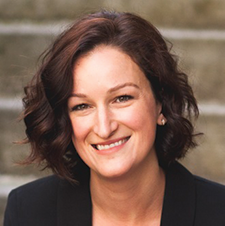 The fall season of 2017 was a very busy one starting with the SMACNA National Convention in Maui.There were also membership dinner meetings, the annual Christmas party at the Pan Pacific, a trip to Tucson, AZ for a Council of Chapter Representatives meeting, and, of course, all the company and family parties and get togethers that go with the holiday season.
The fall season of 2017 was a very busy one starting with the SMACNA National Convention in Maui.There were also membership dinner meetings, the annual Christmas party at the Pan Pacific, a trip to Tucson, AZ for a Council of Chapter Representatives meeting, and, of course, all the company and family parties and get togethers that go with the holiday season.
With the holidays behind us and winter upon us, now we can focus on having a healthy, safe, and prosperous 2018. And now the news.
Need help with college tuition?
The SMACNA College of Fellows is now accepting applications for the 2018 scholarship program. Applications will be for the 2018-2019 academic year. The scholarship application and details on eligibility requirements along with instructions for submitting the application are available on the SMACNA website.
The primary goal of the COF Scholarship fund is to provide scholarships to SMACNA member contractors, employees of SMACNA member contractors, SMACNA chapter executives, National SMACNA employees, SMACNA Associate Members, and members of the families of all of these groups who are participating in undergraduate studies in accredited institutions of higher education.
The secondary goal is to create a sense of community and support among the elements of the SMACNA extended family by working toward a common goal—furthering the education of individual members of the family.
Construction growth outlook good for 2018
Looking ahead to 2018, Fails Management Institute (FMI) continues to forecast a 5 per cent increase in total construction spending over 2017. The primary growth segments in 2018 are expected to include residential, commercial, lodging, office, and manufacturing—all with forecast growth of 5 per cent or more. Most other segments are likely to grow roughly with the rate of inflation and may be considered stable. Sewage and waste and water supply are the only segments expected to decline in 2018.
HVAC Fire Life Safety – Is British Columbia ready for it?
Over the past several years I have attended a multitude of meetings where one very important topic surfaces: HVAC Fire Life Safety and Fire Life Safety Legislation and why it doesn’t happen in BC.
At the SMACNA-BC membership dinner meeting on January 17/18, John Hamilton & Duane Smith / ICB/TABB are going to present to the members the importance of Fire Life Safety and Fire Damper Testing.
John & Duane’s presentation will explain, firstly, we must become more knowledgeable about other national organizations involved with Fire Life Safety Standards & Guidelines, and, secondly, pass this knowledge on as a reminder to code officials, city inspectors, fire officials, politicians, and insurance providers.
In simple terms fire/smoke and fire dampers are very important components of the HVAC system. In realistic terms, fire/smoke and fire dampers can be the difference between life and death.
Below are excerpts from National Fire Protection Association (NFPA) Standards referencing fire/smoke and fire dampers.
NFPA Standards
• NFPA 80: Standard for Fire Doors and other opening protectives. This covers the requirements for Fire Dampers & Ceiling Fire Dampers
• NFPA 105: Standard for Smoke Door Assemblies and other Opening Protectives. This covers the requirements for Smoke Dampers & Combination Fire/Smoke Dampers.
• NFPA 90A: Standard for the Installation of Air Conditioning and Ventilating Systems.
• NFPA 90B: Standard for the Installation of Warm Air Heating & Air Conditioning Systems.
NFPA 80 Requirements
• Each damper shall be tested and inspected one year after installation.
• In buildings not containing a hospital, the test and inspection frequency of each damper shall then be every four years.
• In buildings containing a hospital, the test and inspection frequency of each damper shall be every six years.
• All inspection and testing shall be documented indicating the location of the damper, date of inspection, name of inspector, and deficiencies discovered. The documentation shall have a space to indicate when and how the deficiencies were corrected.
• All documentation shall be maintained by the property owner and available for review by the authority having jurisdiction (AHJ).
NFPA 105 Requirements
• Each damper shall be tested and inspected one year after installation.
• In buildings not containing a hospital, the test and inspection frequency of each damper shall then be every four years.
• In buildings containing a hospital, the test and inspection frequency of each damper shall be every six years.
• All inspection and testing shall be documented indicating the location of the damper, date of inspection, name of inspector, and deficiencies discovered. The documentation shall have a space to indicate when and how the deficiencies were corrected.
• All documentation shall be maintained by the property owner and available for review by the authority having jurisdiction (AJH).
NFPA 90A Requirements
• Each damper should be examined every two years to ensure it is not rusted or blocked, giving attention to hinges and other moving parts.
As you probably noticed, there seems to be a common theme in all the NFPA requirements: inspection of dampers. Sort of makes you wonder the last time the fire/smoke and fire dampers in your building were inspected.
In closing, I would like you to take a few minutes, actually 4 minutes and 30 seconds, to just check the YouTube video link below.
“Fire / Smoke and Fire Dampers: What are they and why should they be inspected” http://www.youtube.com/watch?v=8bSXnd1MO8Q .
Note:There are three certifications required from International Certification Board (ICB): those for contractors, supervisors, and technicians. The details of the certification and the process to obtain certification are available online at www.icbcertified.org.



